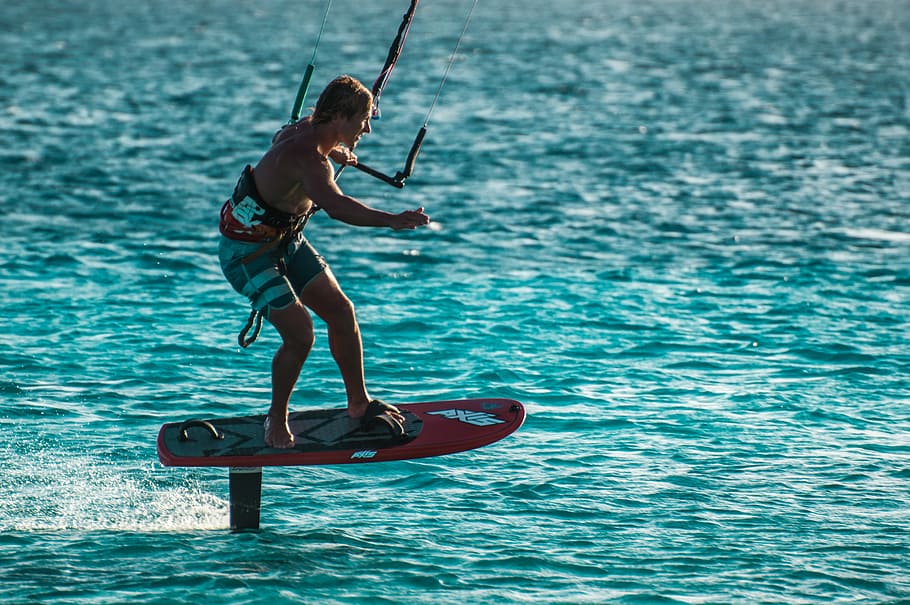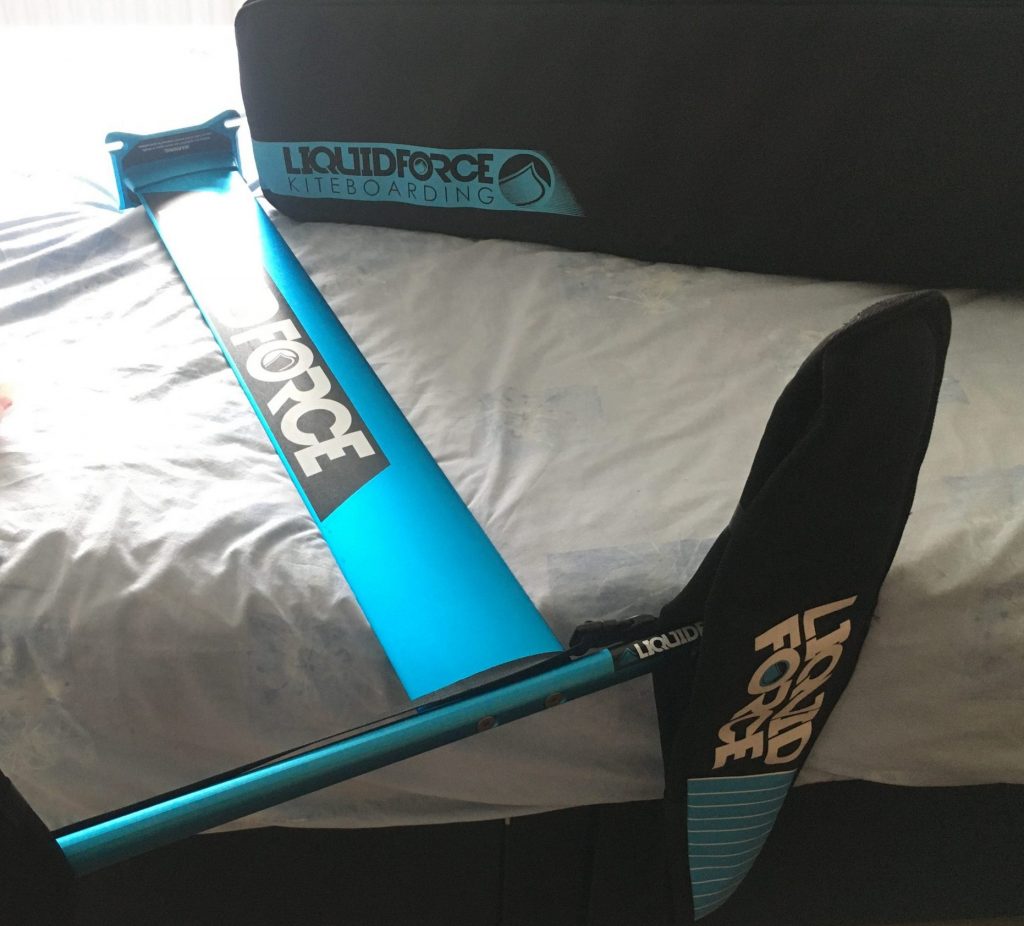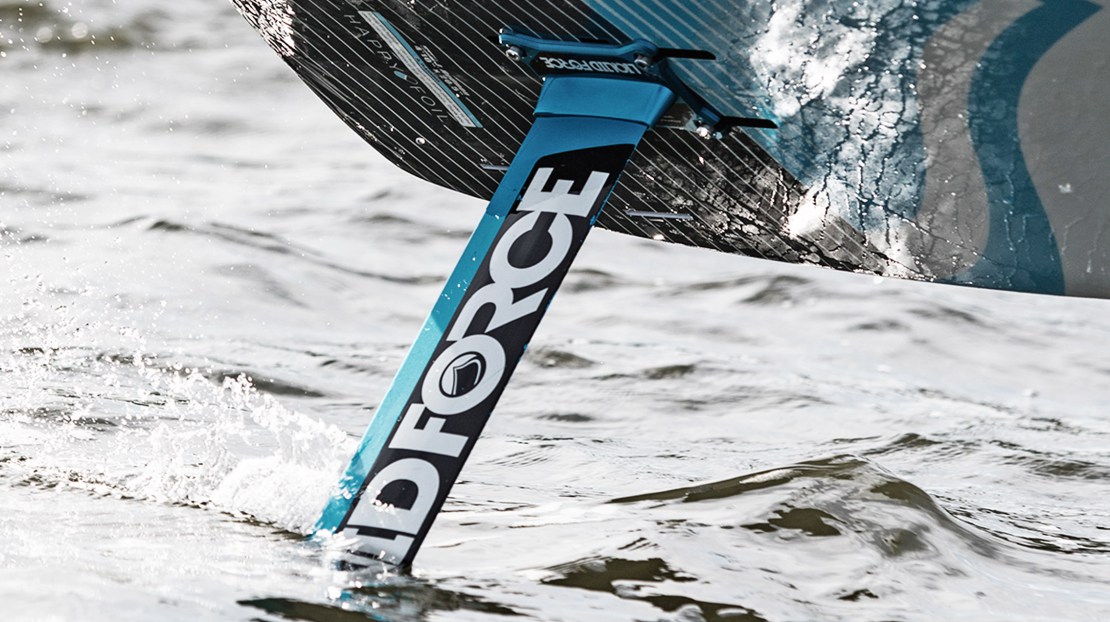Table of Contents
Learning how to kite foil
Learning something new is always a challenge but also a great opportunity. It’s an interesting thing taking up a new discipline in a watersport you are very familiar with and can make you feel like a complete beginner again.
Learning how to kite foil presents both an exciting challenging situation and a humbling experience at the same time going back to basics. That’s certainly how it felt taking the kitesurf foiling board out for the first time.
After keeping an eye out for a long time I found a great deal on second-hand Liquid Force kitesurf foil board a few months ago in the middle of winter (January) but was unable to take it out as one of the bolts that holds the rear foil in place was missing.
There were a number of spares but none were the right size…go figure. The Liquid Force Happy Foil and Happy Pill Board is a medium aspect foil with aluminium mast and fuselage coupled with a carbon wing.
The board had been used as a demo so had a few knocks and scratches but the foil was brand new with only one part having been taken out once, good find!
Learning how to kite foil: UK Weather
I was excited for my first time kitesurf foiling experience but was secretly happy to wait a few weeks until the weather warmed slightly after 10+ years of kitesurfing and many years of watersports in the depths of winter.
Unlike the magazine shots of professional kitesurf athletes foiling around crystal clear blue water, caribbean islands and coral reefs, kitesurfing in the UK is a slightly different affair.
While I was keen to get out and test the new gear in order to learn to foil, I wasn’t in a rush to flounder around in the ice cold water as a hapless beginner on those freezing winter days.
As a family man my time on the water is limited somewhat so while there is always the urge to get out on the water, it’s a case of finding the balance between free time and waiting for the right weather conditions in order to get the most enjoyment out of it.
Learning how to kite foil: Delays
While trying to source a new bolt through the distributor, Covid-19 happened and lockdown ensued, with the subsequent inability to go out and use the foil.
With all surf shops and schools closed I turned to hardware stores and finally managed to find the right size bolt on ebay which was hard to find due to the large diameter (M8) but particularly short length of the screw of its size (15mm).
The bolt finally arrived but then I noticed a cut in my kite from a weekend kitesurf session where I had to self-land the kite on some rather sharp stones and shells. So I had to wait a few more days for some kite repair tape to arrive.
The wind was blowing about 18-20knts and the kite tape arrived in the post early on Saturday morning so I was able to make a quick repair.
With the kite repaired and foil in hand (with all necessary fixings) I was ready to head out on the water (Covid rules permitting this at the time).
I headed down to my local spot in Poole Harbour noting the tides as there are many shallow areas and with a rocky bottom that is particularly unfriendly to a carbon foil wing.
Learning how to kite foil: Getting Going In The Water
To get started kitesurf foiling I followed guidance and took the foil in the water without a kite initially to get a feel for how the board behaves.
With the addition of what is essentially a giant aluminium fin with wings, the board is a lot heavier than a typical kitesurf board and is affected significantly by the forces of nature.
Due to its weight, the board is a lot more cumbersome in the water. People will have their personal preference of strap setup, number of straps, or riding strapless.
I opted for a two strap setup, one at the front and one at the back, nice and simple and twin front setup at the front is best avoided for beginners.
These were set loose so as not to get in the way but useful for hooking your feet under or using as grab handles to move the board into position.
The front strap is particularly useful to grab with your back hand while resting your elbow on the side of the board in order to get it into position while flying the kite with your front hand.
Images of gliding over the water effortlessly like in the images above were quickly replaced with bobbing up and down in the water.
I spent some time trying to get going and was able to get up on the board a few times but was also drifting quite quickly due to the wind and tide so had to get out to walk back up the stretch of beach which is a lot more tiring with a heavier foil board than with a regular kite-board.
It’s strange after kitesurfing for many years to have the feeling of being a beginner again but that’s just what it felt like as I tried to make my first few attempts at moving along while keeping the foil wing submerged.
As expected the foil wing provides significant lift and acts a bit like a bucking bronco so you need to stay focused while flying your kite in a controlled manner.
Something to bear in mind is that since a kitesurf foiling board is generally heavier it also carries a lot more momentum with it when you fall and has sharp edges, suffice to say I got hit in the head once so consider wearing a helmet.
As the wind was easing and the tide was going out I unfortunately knocked the foil on the sea-floor and decided that was a good point to come in.
Fortunately no major damage, just a small chip that I was able to gently smooth out with a bit of sandpaper. All in all I managed a few 10-15m runs that I consider to be a success for an initial foil session.
First time kitesurf foiling advice
If you want to learn kitesurf foiling chances are you are at a good standard of kitesurfing already. If you’re still learning to water-start and have trouble staying up wind then you should probably keep practicing until you’ve honed your skills on the water.
That being said, if you are already an intermediate or advanced kitesurfer then you likely have the necessary skills to delve into this sub-discipline of kitesurf foiling.
The following tips will make learning how to kitesurf foil easy.
Learning how to kite foil-board tips
- Choose the right beginner foil setup
- Consider a short mast for learning
- Learn how to handle the foil board on land – much heavier than a normal kiteboard
- Learn how to handle the foil in the water – the wing acts like a big weighty fin and behaves differently in the water
- Practice keeping the board in the water then progress to rise and glide before trying to go faster
- Understand the dynamics of riding the foil – balance and increased front foot pressure compared to normal kitesurfing
- Practice in good wind and predictable conditions
Additionally watch online videos and tutorials and consider lessons from a professional kitesurf foiling instructor.
Check out the kitesurf foiling videos below for tutorials and technique that will make learning how to hydrofoil a lot easier.
Happy kiting!
Video: 4 Tips That Make Learning How To Kite Foil Easy! – by Jake Kelsick
Video: Progression Sports: The Stages of Learning to Hydrofoil – Learn Kite Foiling
More Inspiration
For ideas on how to make money online while travelling check out this article




Trackbacks/Pingbacks